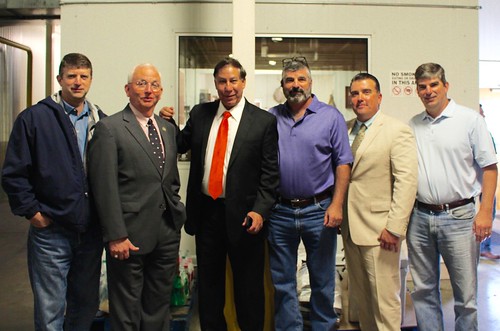
A solid vision combined with an innovative approach to reach new markets can yield success in the ag industry. During a recent trip to Atlanta, Ga., I got a chance to talk to state and industry leaders who are using both to solidify the future of their respective organizations.
I joined a team of employees from the USDA’s Agricultural Marketing Service (AMS) for a tour of the Atlanta State Farmers Market in Forest Park, Ga. Supporting truck, rail, and air access, the market is considered to be one of the premier terminal markets in the southeast. It includes more than 150 acres of retail, wholesale, and garden center space. We toured the historic market with the Georgia Department of Agriculture Commissioner Gary Black and his staff.
The tour included a stop at J.J. Jardina Co., Inc., a family-owned wholesaler that receives and distributes food from all over the world. USDA inspection services help the company maintain its reputation of distributing high-quality produce. They also use Market News data to help the company make informed decisions.
Supporting the state’s effort to expand opportunities for its ag businesses, J.J. Jardina received the market’s first direct import of stone fruits from Peru via the Port of Savannah. The shipment was the result of talks between Atlanta State Farmers Market manager Paul Thompson and officials at the port. Atlanta’s unique location enabled the shipments to be delivered from the port in less than 5 hours before being distributed to other locations along the eastern sea board. With adequate cold storage, J.J. Jardina is able to break down and distribute shipping containers of produce that would have passed through Atlanta on their way to nearby poultry houses.
Hopes are that Peruvian stone fruit imports will yield new opportunities for the market. Thompson plans to expand the market’s wholesale cold storage section. With nearly 1,000,000 square feet of cold storage, part of the market’s revitalization plan is to expand this number and make closed refrigerated wholesale space by 2016. Cold storage was a major factor in the agreement to accept the Peruvian imports, and the market hopes an expansion will lead to similar opportunities.
The market is just one of the many ways that Georgia is strengthening the local ag economy. Commissioner Black discussed his innovative vision for the future, which is spearheaded by increased marketing efforts through the state’s Georgia Grown brand. The brand includes a federally licensed trademark that allows the entire Georgia ag community to use the logo and branding to support their business. In 4 years, more than 600 businesses have used the branding to help with their marketing efforts.
Looking to the future, the commissioner’s plan is to help the state’s producers benefit from the increasing demand for local food while increasing student’s access to healthy foods. His innovative 2020 plan includes a goal of having at least 20% of the meals served in Georgia schools to be sourced from local foods in 2020.
After visiting the Atlanta State Farmers Market, it is clear that the future of the ag industry is in good hands. USDA is committed to supporting states like Georgia as they find ways to increase marketing opportunities for our nation’s producers and ranchers.


